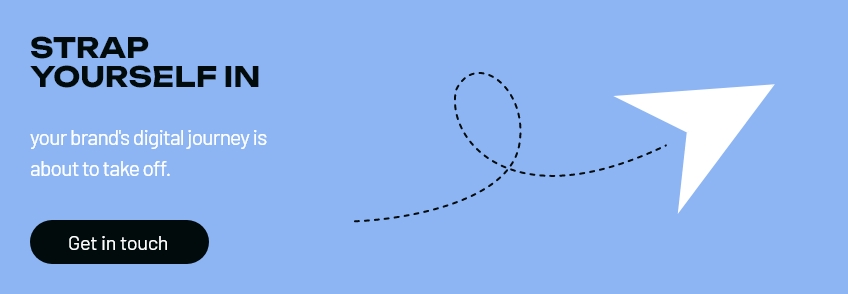When people think about content and advertising campaigns they think of creative. In reality, great marketing is a blend of both creativity and data, so much so that we say that creativity starts with data. It helps frame your thinking on a problem and find out whether your content is going to connect with your audience, as well as how data can guide the content creation process. Data gives you context but it can also be the core of creative.
Data really isn’t just about the numbers. While many creatives are a little wary — or downright skeptical — about data, it’s crucial for a business to encourage its marketing team and creatives to explore how data can provide inspiration, rather than limitations. When a business starts to understand its audience, all marketing efforts start to come together – it just involves a little thinking outside the box, but in the end, it’s worth it.
The best way to engage and entertain an audience is through the age-old method of storytelling. Data helps to write that story – it unfolds the plot and builds a fact-based worldview with the potential to persuade your audience of anything.
The relationship between data and creativity is an area that brands should always nurture – here’s how.
The Way We Use Creativity Is Constantly Evolving
In so many businesses, creativity is often shifted to one side. Creativity is what the creatives do — and they do it over there. But creativity now has a leading role in many business processes. It’s about speaking to customers in new and innovative ways — so marketing and data need to be treated like two equally important sides of the same coin. Data listens, and creativity speaks.
McKinsey & Company have spent a lot of time and money studying the impact of creativity in the workplace — and for good reason too. They created an Award Creativity Score (ACS) to look at how different companies with different levels of creative thinking fared. Their findings were fascinating, but boiled down this: more creative companies have better results, more value, and much more growth. They found that including room for creativity in every step of the business process and engaging in more interdisciplinary and cross-department work can make a huge difference.
In fact, in a huge survey of companies, they saw that in more creative companies, 67% had above-average organic revenue growth and 70% had an above-average total return to shareholders.
How did they do it? Well, McKinsey found that it all starts with the right mindset. Inject creativity into the ethos of your company and watch the benefits roll in. This isn’t just some nebulous idea, it’s about how to spend resources in the right way – we’re talking time and money. Giving employees the time to brainstorm is one thing, but if you look at what the top firms are doing, you’ll see that they spend 2.5 times more on their marketing than their industry peers. So, putting your resources into the creative processes really pays off, especially when those creatives are armed with data.
Good data analysis has the power to yield hidden gems from your data that challenge everything you thought you knew. Digging out these unexpected insights help creatives think about the world in ways they could not have imagined since it has the power to flip the truths they take for granted. This can give creatives a huge edge over their clan.
More Information Is Not A Bad Thing
Data comes with the bad reputation of making some creatives feel boxed in, but it’s about time we changed that narrative. The truth is, more information is never bad and it’s the foundation from which you can grow – as a person and as a business. And when it comes to the creative teams, learning about the customers they’re marketing to should be looked at as adding strength to the great work their doing.
If you look at the top brands out there you’ll see that they are completely customer-oriented. They spend time learning as much as possible about their consumers and observe them in their own environment to gain insight and understand that can help in their digital marketing decisions. For example, it benefits your creative teams to know that your customers prefer sustainable companies or innovative thinking — because those values can be highlighted in your marketing campaigns. Yes, data isn’t always the sexiest topic in the world, but the truth is, it’s a great way to understand mindsets and habits. These findings should become fuel for creative thinking, rather than a limitation on it.
There’s a reason that Cannes launched its Creative Data Lions category — the two go hand in hand. Categories Like Data Driven Targeting and Data Storytelling show just how linked the two can be when you let them.
Strategy Is Inherently Creative
If you’re talking about the merge of data and creativity, it would be naive to ignore skepticism towards data and the tension that can exist between strategies and creativity. While there may be a habitual wariness, brands need to be able to combat that and completely rewrite the dynamic. The most exciting projects often come out of cross-departmental work. In science, there’s a well-known phenomenon called “The Edge Effect”, which is when two different ecological areas meet — and right along the edge between the two is where the newest life is created and interesting things can flourish. But merging data with creativity doesn’t end with science. In fact, the movement has permeated art, where even Yo-Yo Ma is trying to recreate this phenomenon in music. And it can help you too, regardless of your industry. As McKinsey found, by getting your teams to work together, some exciting discoveries can be made when data and creativity come together.
Look at how your teams can bond and understand each other. Remind them that strategy and data are essentially creative — they’re about new and innovative ways to understand the customer — which is exactly what marketing is trying to do. So have your teams focus on what they have in common — the customer — and build on from there.
Creativity Is All About Creating Space, Fast
McKinsey found that one of the main benefits generated by creativity was speed. Firms that scored highest in creativity were ahead of the competition in part because they moved faster — in fact, 74% said they had to make decisions fast at some points, compared to only 40% of less successful firms. Incorporating creativity in all the nooks and crannies of your business creates space for innovative thinking, on-the-spot decisions and everything that you need to keep your brand ahead of the curve.
Data and creativity are two sides of the same coin – they’re simply two different kinds of problem-solving. A.I. is already doing creative things in basic ways, which means that it’s using data to be creative. Basically, throw enough intelligence at a technology and it can be creative. While data can seem scary to a creative, creativity can seem unapproachable to data experts. There’s nothing special about our brains as far as creativity is concerned. We’ll see it in A.I. systems as they become more intelligent in years to come, for the single reason that they consume so much data.
That’s why no matter how creative you are, more information is always better. Data helps you listen to your customer and creatives help you speak to your customer. It’s the perfect marriage and there’s no reason to keep them apart.
If you’d like to see how creative thinking and data can perform wonders for your brand, get in touch – we’d be happy to help.



